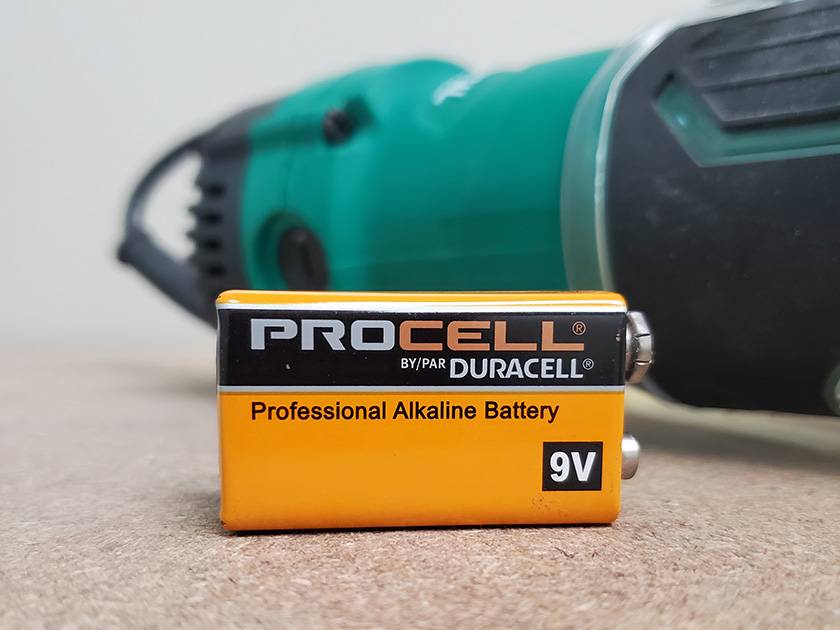
Hello!
The other day, a junior colleague of mine told me that the chorus of “I Surrender” by Rainbow sounded like “朝練だ朝練だ君の苦労は見てんだ” (Asaren da, asaren da, kimi no kurou wa miten da –” (It’s morning practice, it’s morning practice, I’ve been watching your struggle).
I listened to it myself and was shocked to find that it actually did sound like that. I thought it was just a silly misheard lyric (soramimi), so I searched online, only to discover that someone had already come up with the exact same misinterpretation.
When I told him that it was a common ‘soramimi’, he looked puzzled and asked, “Soramimi?”—it turns out he had never heard of Soramimi Hour (a classic Japanese TV segment featuring misheard lyrics). So, I started explaining: “There used to be this TV show...”—but midway through my explanation, it hit me: “Wait... doesn’t this make me sound like an old guy?” And in that moment, I realized: This is how people gradually become old...
Today, I’d like to explain potentiometers, commonly referred to as pots.
Pots are an essential component in guitars, used to adjust volume and tone.
They’re also a part that always requires soldering when replacing pickups. Understanding how they work will definitely come in handy.
◯ Structure of a Potentiometer
Let’s start with the structure.
That said, the pot is covered with a metal lid, so it’s hard to see what’s inside.
So... let’s take it apart!
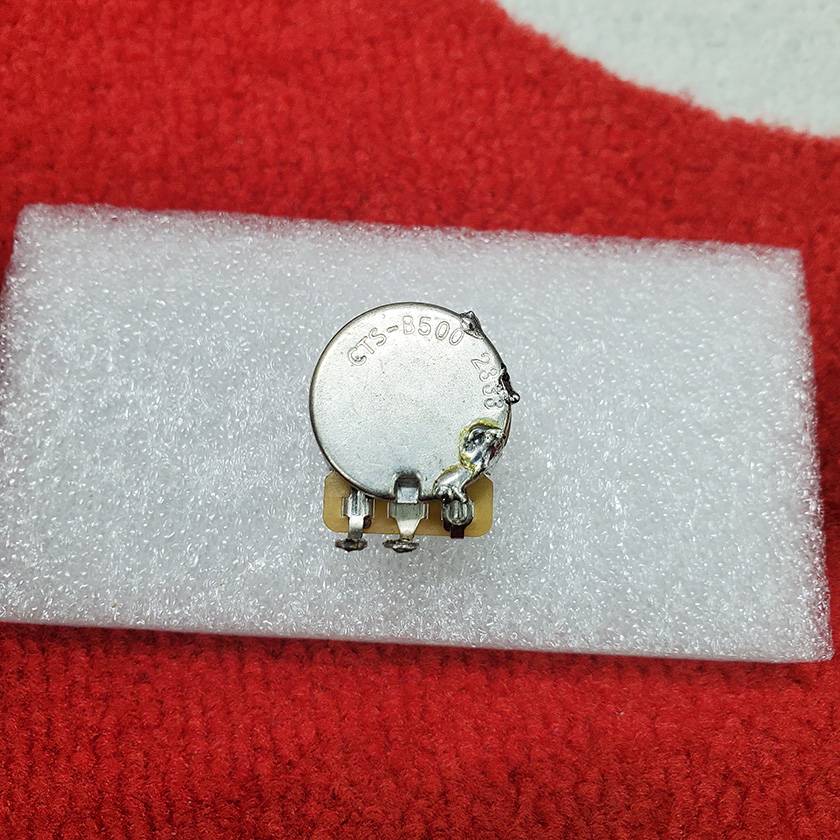
↓
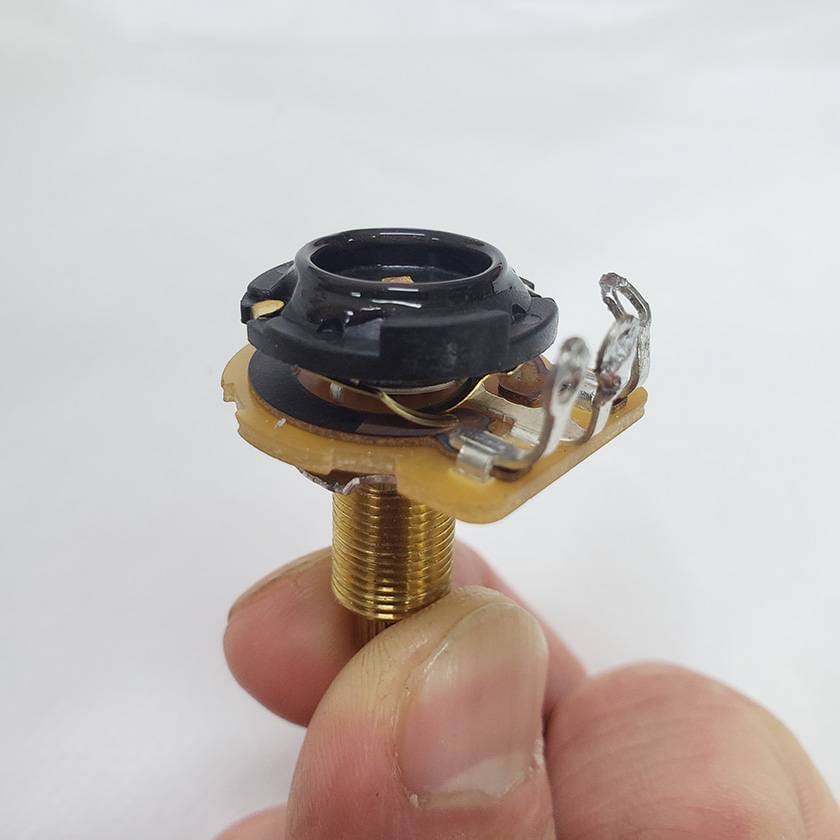
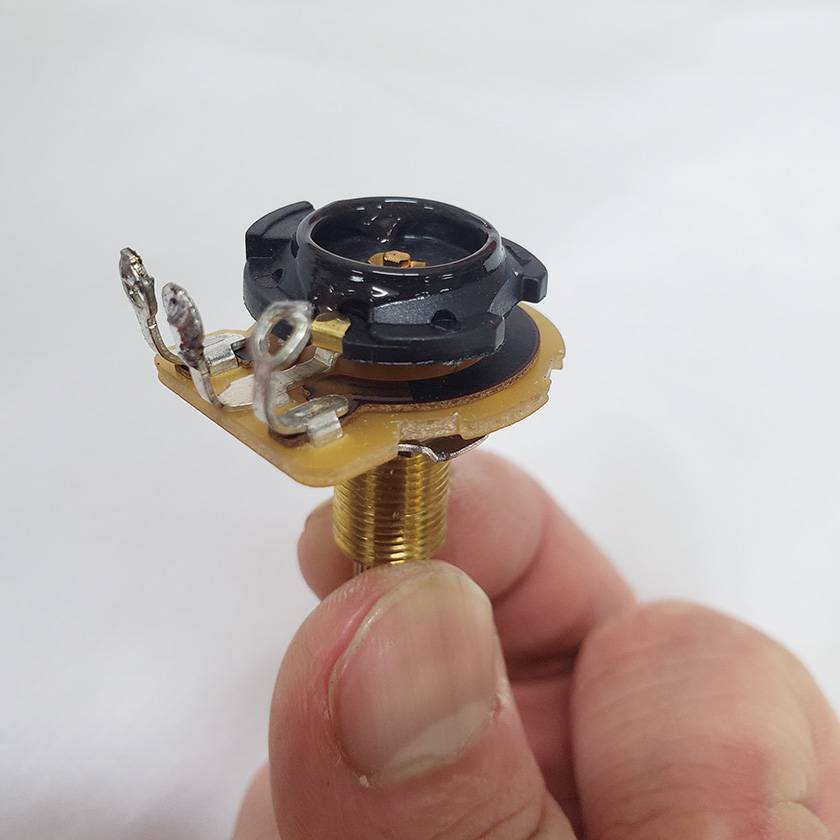
Looking outside, there’s a black circular component with something like a leaf spring making contact with it.
The way it works is simple: when you turn the shaft, the leaf-spring-like part moves along the black circular surface.
So, what exactly happens electrically?
A potentiometer is technically called a variable resistor.
You’ve probably seen resistors before.
They’re those tiny components that look like a peanut shell.
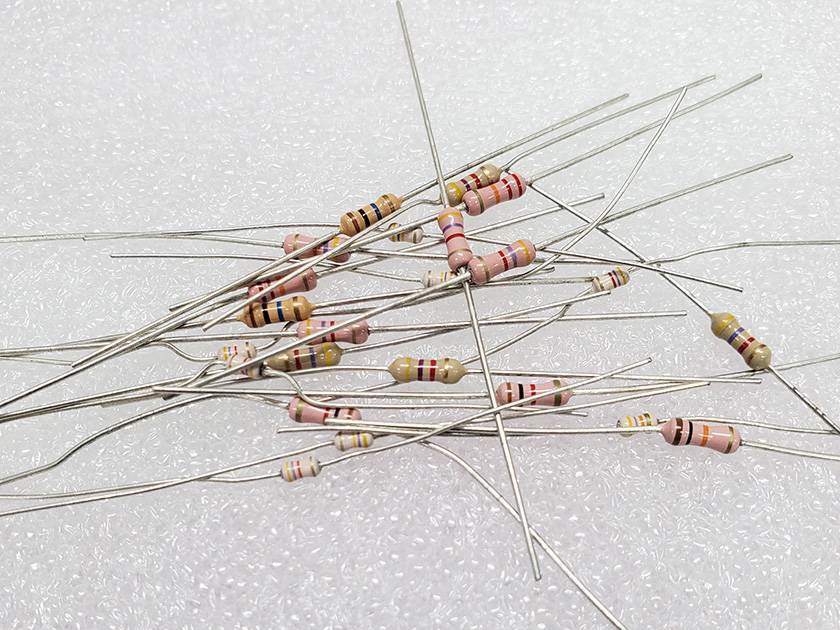
A resistor, as the name suggests, is a component that resists the flow of electricity. It is used in electronic circuits to regulate and control the flow of current.
In a potentiometer, the circular section acts as the resistor, and the metal contact that touches it moves, allowing the resistance value to change dynamically.
But with just this explanation, it’s still not entirely clear what’s happening, right?
So, let’s take a look at the diagram below.
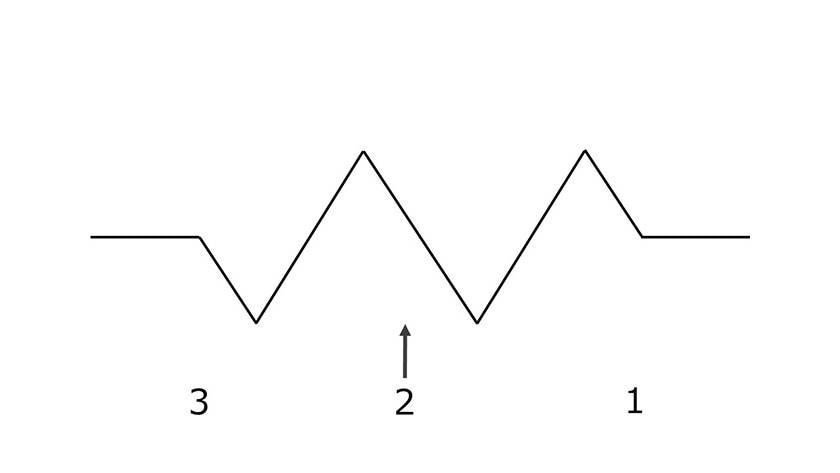
This diagram simplifies the structure of a potentiometer. The jagged line represents the resistor (the circular section inside the pot). The arrow (↑) represents the moving metal contact, which is connected to terminal 2.
Now, let’s assume we’re using a 100kΩ potentiometer and observe how it works.
First, we turn the potentiometer slightly.
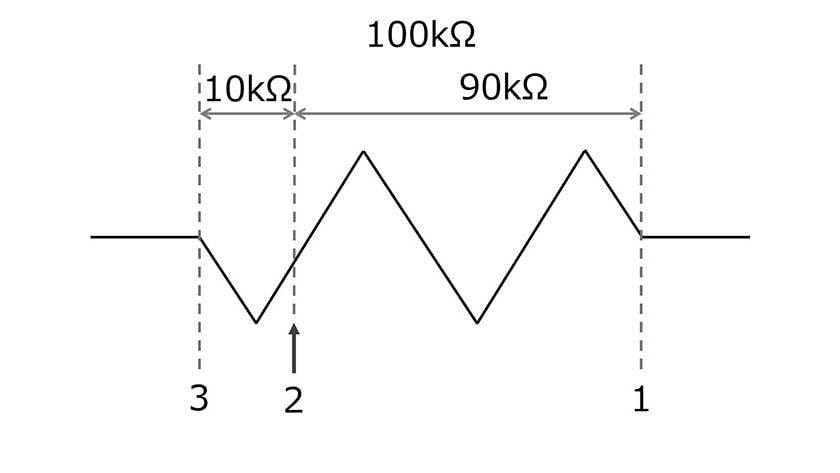
At this point, as the wiper moves slightly along the 100kΩ resistor, the resistance values change: ③ side: 10kΩ and ① side: 90kΩ.
Now, let’s turn the potentiometer halfway.
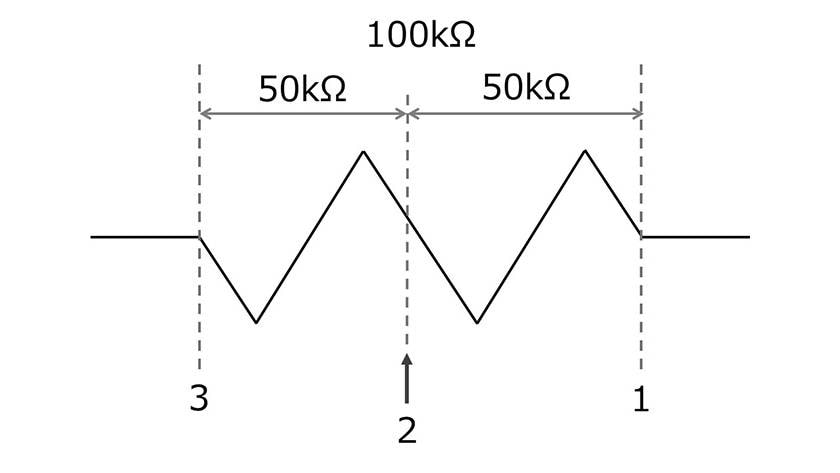
Inside the potentiometer, the metal wiper moves to the center, dividing the 100kΩ resistor equally: ③ side: 50kΩ and ① side: 50kΩ.
You probably get the idea by now, but just to confirm—if we turn it even further...
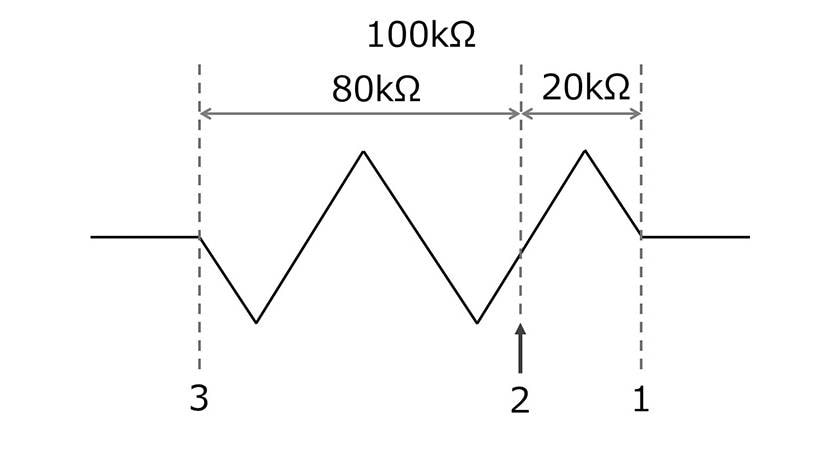
It results in the configuration shown in the diagram above.
This is how the wiper moves and changes the resistance values!
That’s the fundamental principle of a potentiometer.
◯ How It Works as a Volume Control
Now that we understand the structure of a potentiometer, the next question is: How does it function as a volume control in a guitar?
To put it simply, a potentiometer divides the voltage to determine the output level.
However, voltage division might not be an intuitive concept, so let’s break it down using a diagram.
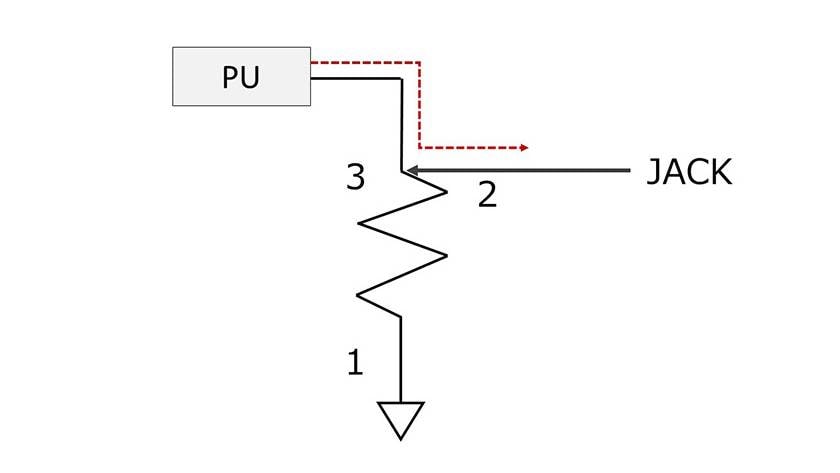
The diagram differs from the previous one in orientation (it’s now vertical), but the internal mechanics remain the same.
In the first diagram, the potentiometer is fully open (full volume). The signal from the pickup enters terminal 3 and travels through the conductive path.
Then, it exits via terminal 2.
This means that the full pickup signal is being output—in other words, maximum volume.
*For those with electrical expertise, you might notice some simplifications in my explanation. To keep things easy to understand, I’ll refer to this as ‘full power output’.
Now, let’s see what happens when the volume knob is turned halfway down.
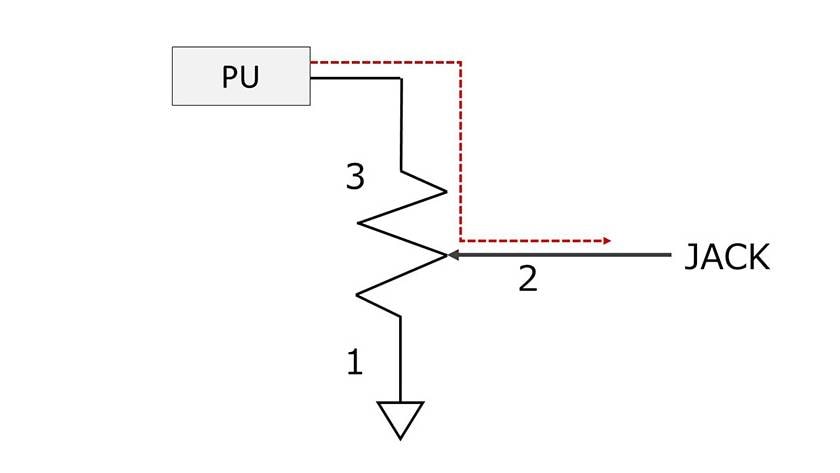
As you can see, part of the pickup’s signal is now passing through the resistor before being output.
This attenuates the signal, resulting in a quieter sound from the amplifier.
Finally, let’s examine what happens when the volume is set to zero.
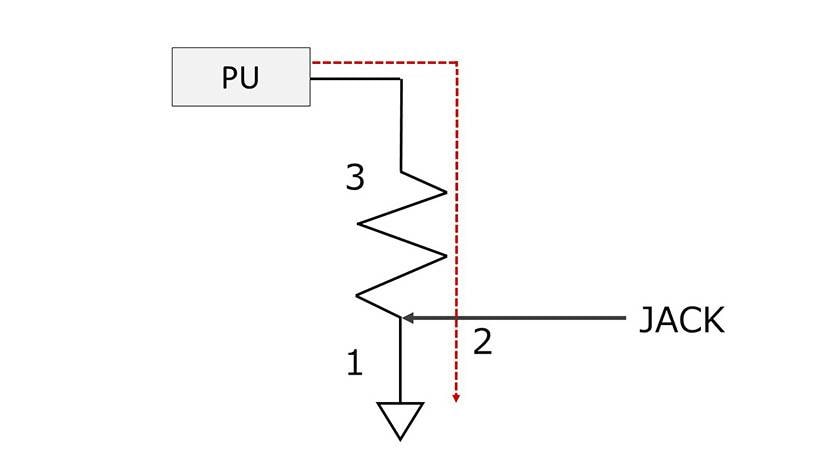
Huh?
When the volume is set to zero, the signal doesn’t go to terminal 2 but instead flows entirely to ground.
*Again, I’m using ‘entirely’ here for simplicity.
This behavior is dictated by the nature of electricity.
Electricity flows toward the point with the lower potential.
Since the ground has a lower potential than the output jack, all the signal gets diverted to ground, meaning nothing reaches terminal 2—and that’s why no sound comes out. *The same as other asterisks.
The term ‘potential’ might sound technical, but for now, just think of it as “electricity naturally wanting to go to the ground.”
Next, I’d like to talk about how tone controls work.
However, that would make this post quite long, so let’s leave it here for now. I covered a broad overview of potentiometers and how they work as volume controls in a guitar—how did you find it?
For this explanation, I disassembled a potentiometer, but as I mentioned earlier, putting one back together can be tricky. So I strongly advise against taking yours apart unless you’re fully prepared.
Additionally, some of the explanations might have been a bit complex, especially for those encountering volume pots for the first time.
My apologies if anything was unclear.
I'll be covering the details mentioned with asterisks in future blog posts, so stay tuned!
Thank you for reading.
I’d love for you to check out my next post as well.
See you again on the Sound House Staff Blog!
Goodbye!






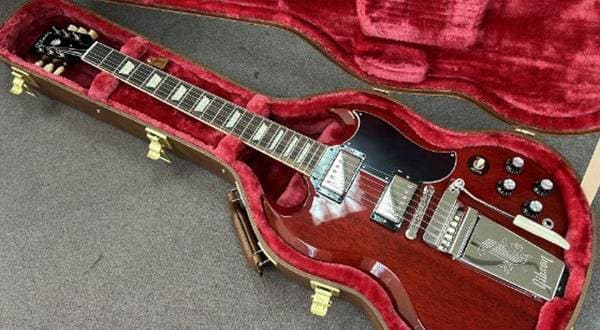
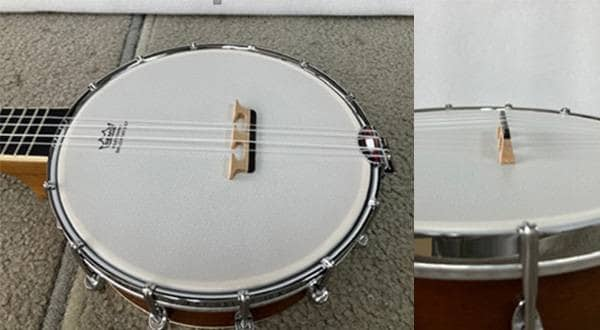

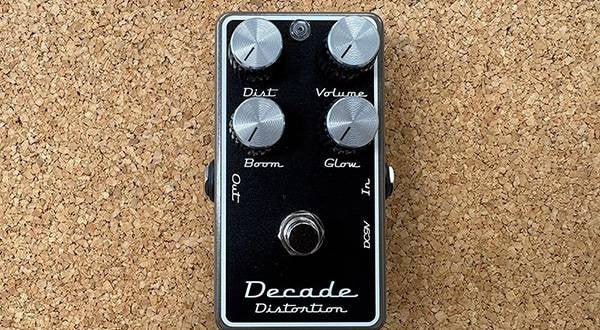
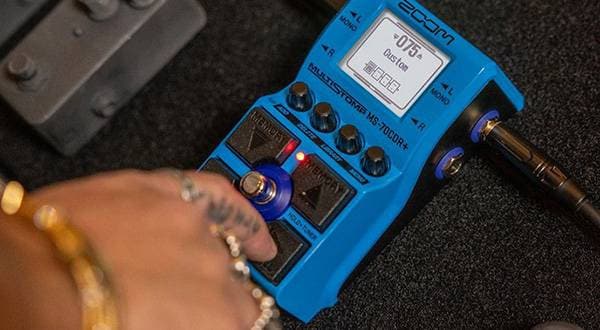

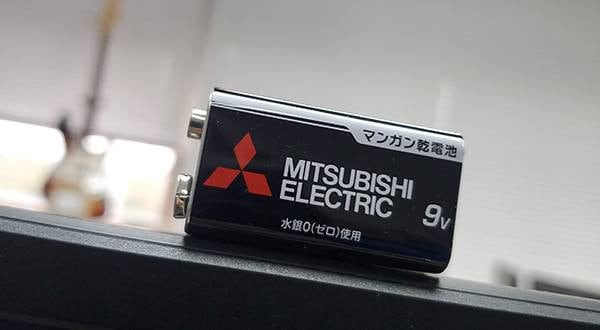
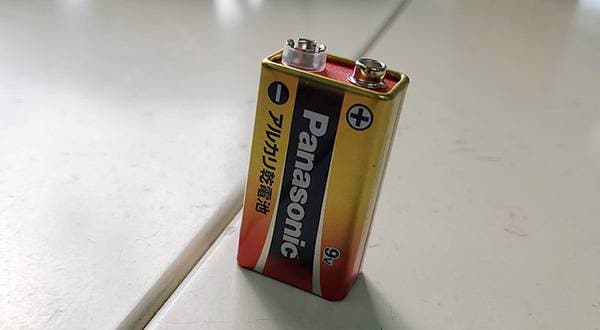
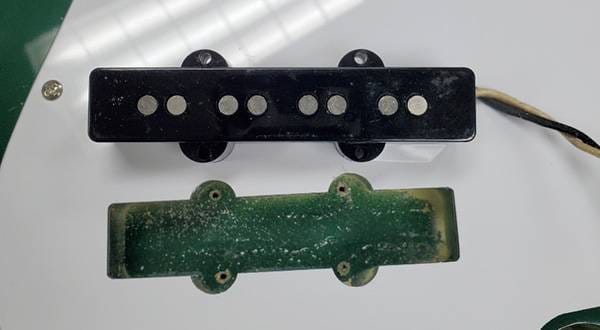
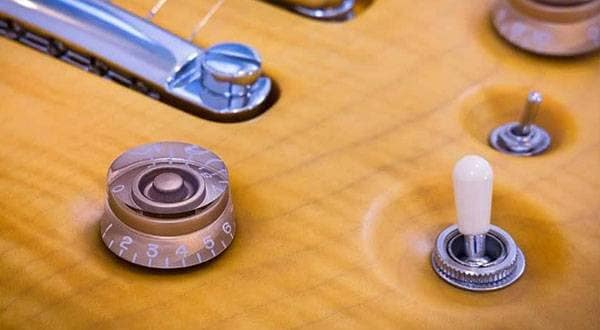
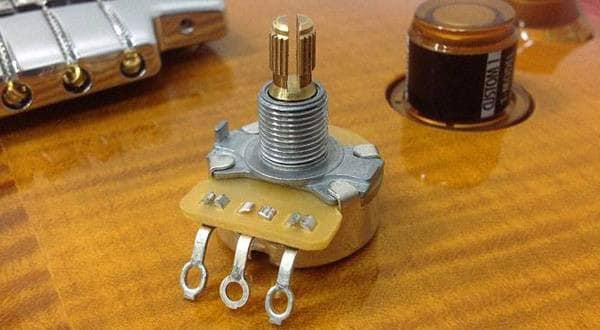
 ピックアップ交換大作戦!
ピックアップ交換大作戦!
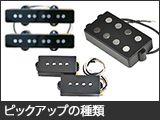 ピックアップの種類
ピックアップの種類
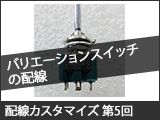 配線カスタマイズ 第5回
配線カスタマイズ 第5回
 配線カスタマイズ 第1回
配線カスタマイズ 第1回
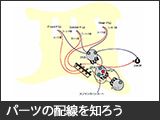 パーツの配線を知ろう
パーツの配線を知ろう
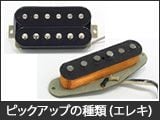 ピックアップの種類(エレキギター)
ピックアップの種類(エレキギター)















